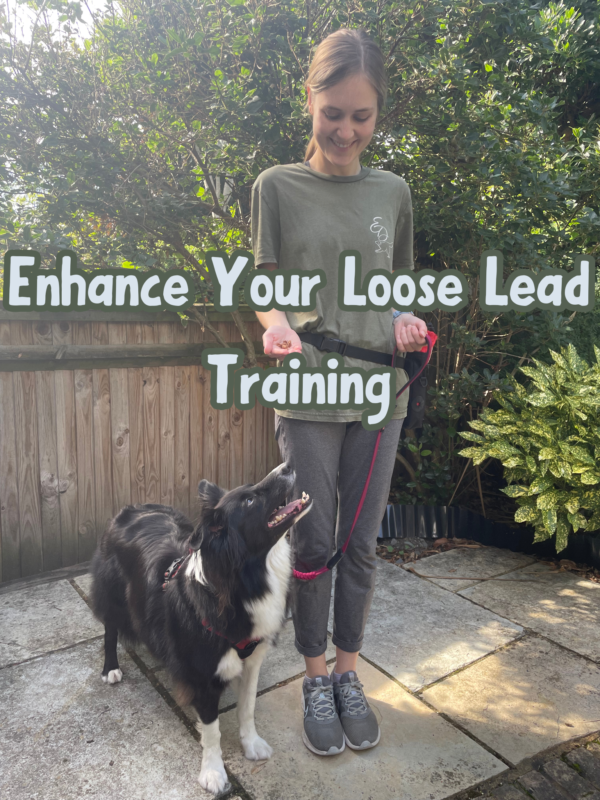


Have you hit a roadblock with your loose lead training? Have a new puppy and want to get started on the right foot (or paw)? These are my 3 easy tips for loose lead walking that aim to make it all a little less confusing and complicated!
There are so many factors that go into why your dog is pulling on the lead. When I’m teaching loose lead walking in puppy class, I always say to choose your battles. To me, it is far more important for a puppy or dog to have the chance to sniff and explore an environment and enjoy themselves on a walk rather than be perfectly walking to heel. Saying that, it is a great skill to have and can be a life-saver for those who have a dog who is making the walk more stressful than enjoyable.
Before thinking about training the skill of loose lead walking, consider these factors:
Environment – are there any distractions making it difficult for your dog to concentrate?
Time of Day – Sometimes practising loose lead walking first thing on the walk can be difficult due to your dog’s energy levels and excitement to go out!
Equipment – It is possible that your dog’s harness or collar may be causing discomfort when walking. Be sure to check that they are a proper fit and not chafing behind the legs. Avoid any aversive tools like slip leads and choke chains. Additionally, your dog will likely find walking in a Norwegian harness that goes across their chest (think Julius K9) inhibits their natural stride. I’m a fan of a well-fitting H or Y front harness.
Here are my 3 easy tips to enhance your loose lead training:
1) Use a longer lead
I see so many dogs walking down the street with leads that are so short that they go tight the second they leave the handler’s side. This is easy logic – the shorter the lead, the more likely it will go tight! My first tip to anyone struggling with loose lead walking is to get a longer lead. Dogs naturally move at a faster pace than us, so a lead that is too short can inhibit their natural stride. It may be that they just want to trot slightly ahead of you! A longer lead also gives them a chance to explore the environment more easily, giving them a more enriching walk.
2) Practise without a lead
This may seem counter-intuitive, but practising walking to heel can be much easier without a lead. Leads can cause frustration and add another element to training, so I like to practise my voice cues and hand signals at home or in the park without a lead (my go-to voice cue for being at my heel is ‘with me!’). This will put your cues to the test and enhance your communication with your dog so that when the lead goes on, it’s no big deal.
3) Don’t wait until the walk
A common mistake is that handlers only practise loose lead walking when out on a walk. As mentioned above, there are so many factors that can make being on a loose lead very difficult for your dog. Especially if loose lead walking is a new concept, try at home in the living room first. If practising outside, I suggest starting just outside the house and letting your dog freely sniff the area you will be training in before starting. This gives them a chance to understand and explore the environment first and sets them up for a successful training session. I also recommend keeping loose lead training short and practising in small doses. It can be very frustrating for many dogs, so keeping that frustration level low by doing short training sessions will allow for greater success in the future.
What gets rewarded gets repeated, so repetition and consistency is key with any training. If you need additional support, contact Encore Dogs via kaitlin@encoredogs.com or find your nearest qualified trainer via the ABTC.
Happy Training! 🙂